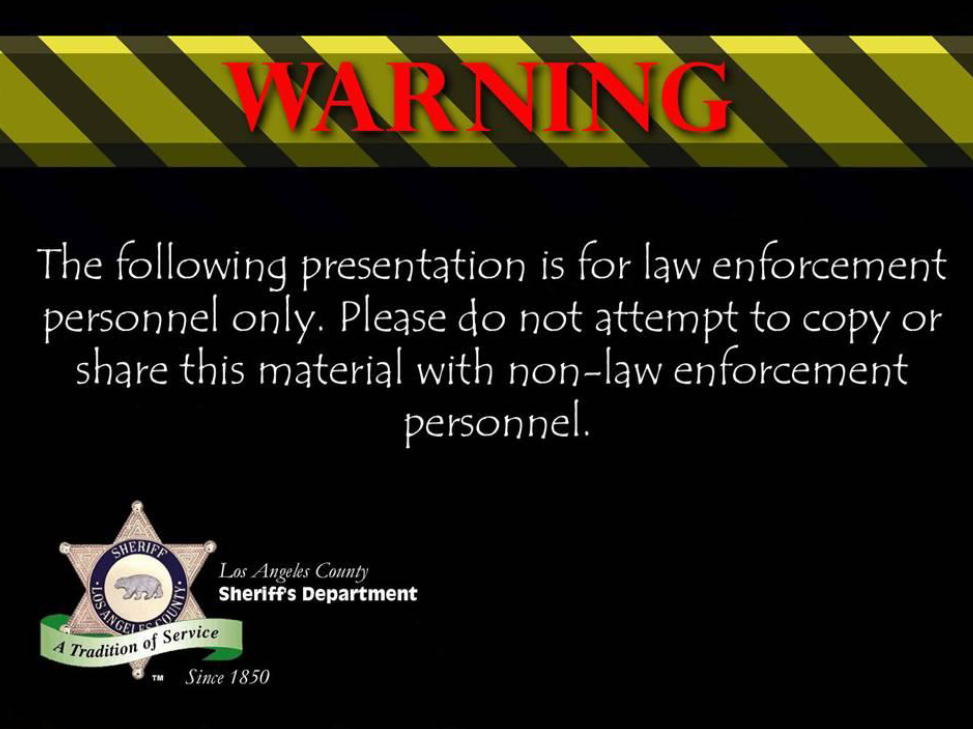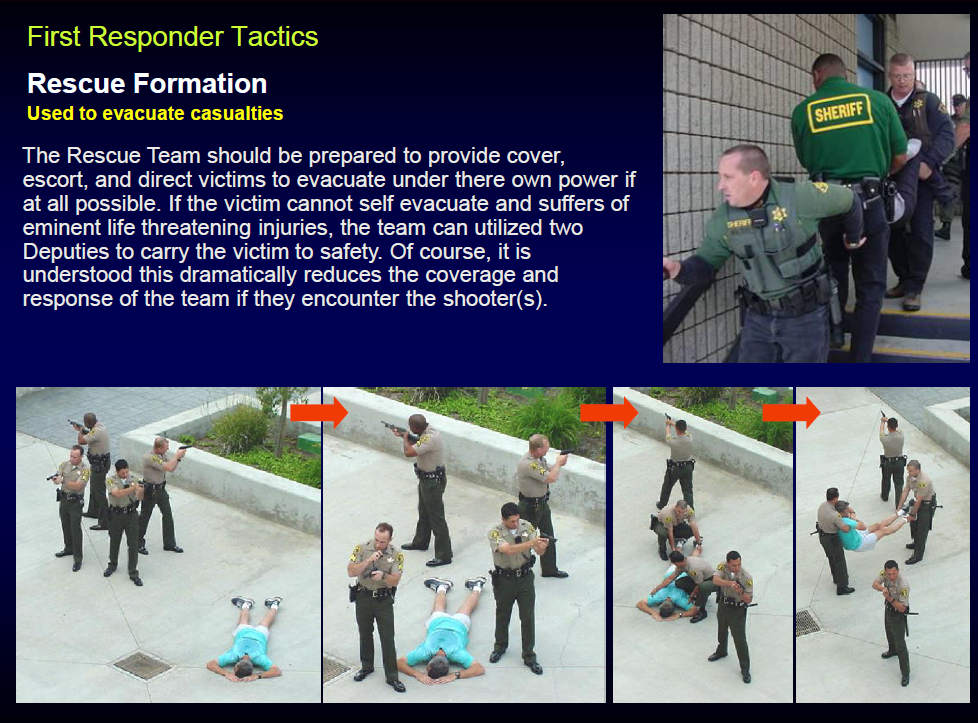 Los Angeles County Sheriff’s Department
Los Angeles County Sheriff’s Department
- 65 pages
- For Law Enforcement Use Only
- December 2008
This presentation deals with how to prevent, prepare, and tactically respond to a active shooter incident. This will include a historical overview of noteworthy active shooter incidents, with an emphasis on school shootings.
Lessons learned, key terms, and important definitions will be discussed as well as the crisis response box, lockdown, and evacuation procedures. This presentation will also review law enforcement equipment, training and tactics as well as post shooting event incident management and threat assessment & management techniques.
…
Commonalities & Lessons Learned
- Active shooter incidents are often spontaneous
- Suspects behavior was unpredictable
- Pre-incident signs existed in school incidents
- Incidents occur in a target rich environment
- A tactical intervention was too late
- Multi-jurisdictional response issues were present
- Incidents occurred in a “target rich” environment
- Suspects usually do not have a escape plan
- 9 out of 10 active shooters are suicidal
- Average age for a school shooter is 14.5 years old
- Suspects are mentally deranged or acting in a diminished mental capacity
- Mass murder is most often the goal rather than other criminal conduct, such as robbery
- Most active shooter incidents are over within 10 minutes or less
- Multiple weapons and ammunition are often involved
- First responders often are outgunned and ill-equipped
- Police officers often did not have proper training
- Expect carnage and complete chaos, noise, confusion, alarms with frightened people running and hiding and unwilling to respond to your directions
- A “traditional” police contain and negotiate tactic does not work…tactical intervention is needed
…



